Quang Tri's post-war allure unveils a transformative experience for visitors, as they behold the natural scenery that once endured bombs and bullets.
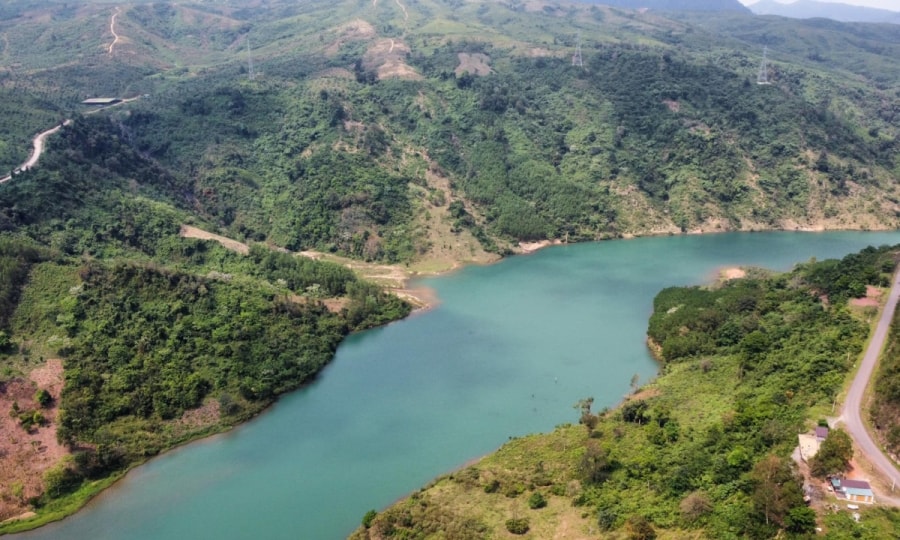
Quang Tri in central Vietnam is about 616 km from Ha Noi and 1,077 km from Ho Chi Minh city. Once a battleground with a history of war, it is now a cultural and historical tourism hub, famous for resistance relics and the 17th parallel, the provisional military demarcation line established by the Geneva Accords (1954).
In addition to its rich history, Quang Tri also features natural landscapes, making it a promising destination for travelers.
Tran Minh Hieu, a local and tour guide, describes his hometown as a place of pristine and tranquil beauty, adding to Vietnam's diverse natural charm. The best part is that many of these locations are free for visitors to enjoy throughout the year.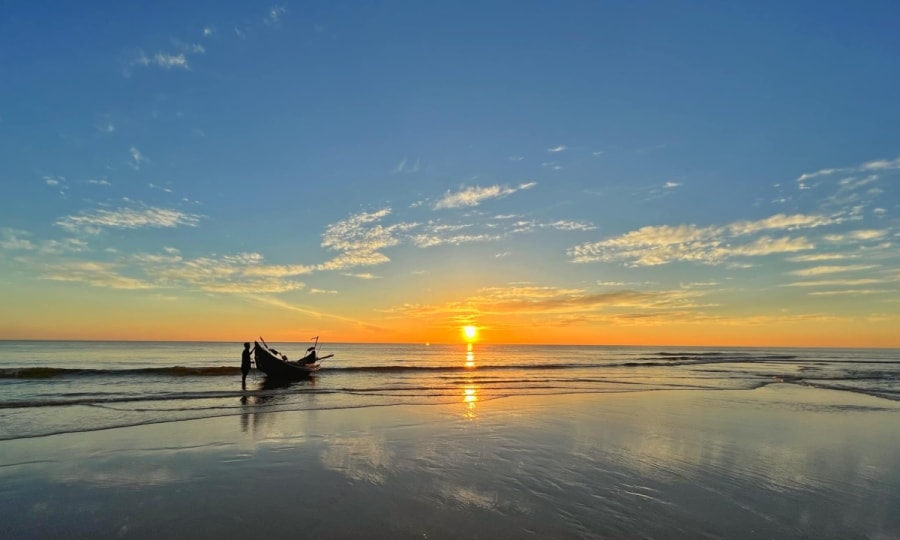
Visiting Quang Tri during summertime, Hieu recommends Trieu Lang Beach in Trieu Lang commune, Trieu Phong district, about 20 km from Dong Ha city. With its flat sandy shores and shallow waters, the beach offers an infinite coastline that has grown popular among visitors.
The tranquil sea reflects the sky's colors while fishing boats gently glide across the waves, venturing out to harvest the bounties of the ocean. The setting is serene, yet transforms into a vibrant spectacle as the first rays of dawn touch the landscape.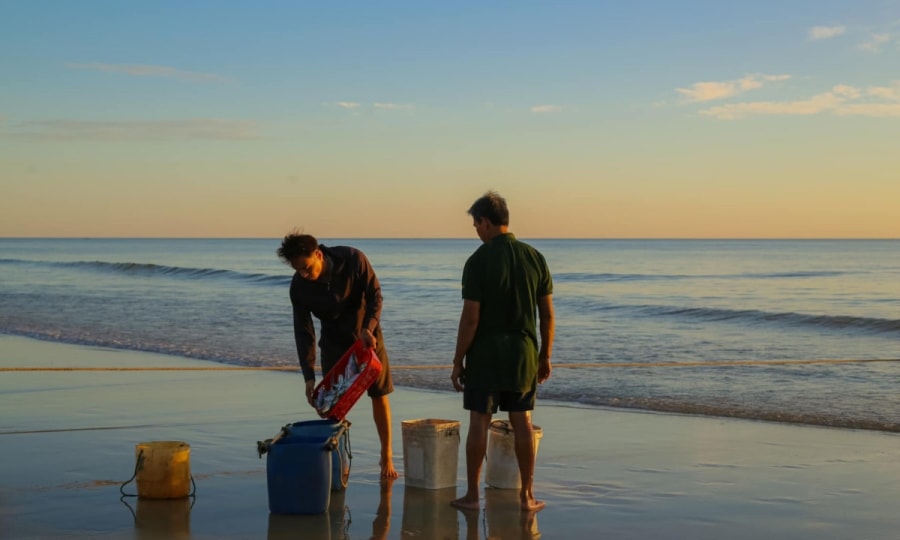
In Trieu Lang commune, fishermen engage in fishing activities in the early morning hours before dawn. Unlike the bustling Tam Tien fish market in nearby Quang Nam province, Trieu Lang offers a serene and unhurried coastal experience.
"Trieu Lang is an ideal destination for tourists seeking relaxation. It's a place to immerse in the sound of the waves, feel the soft sand beneath your feet, and savor the sunlight and sea breeze," Hieu said.
Located near the lotus lake in An Luu village and the Quang Tri Ancient Citadel, Trieu Lang Beach is a destination travelers can visit in the morning.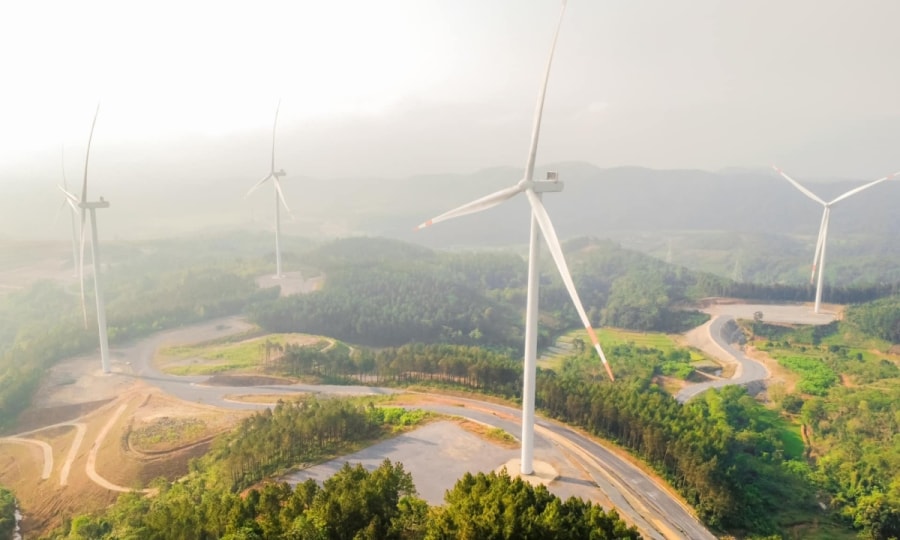
In November 2021, 19 wind power projects in Huong Linh commune, Huong Hoa district were set in motion, creating what is now called the "wind valley."
The wind turbines, situated atop the hills in the highlands of Quang Tri, have turned Huong Linh commune into an ideal destination for cloud hunting and photo opportunities.
As part of the project's construction, major roads were opened, allowing convenient accessibility to the area. For a panoramic view of the wind power field in Huong Linh commune, visitors can venture to the top of Cu Vo Hill, which is also situated in Huong Hoa district.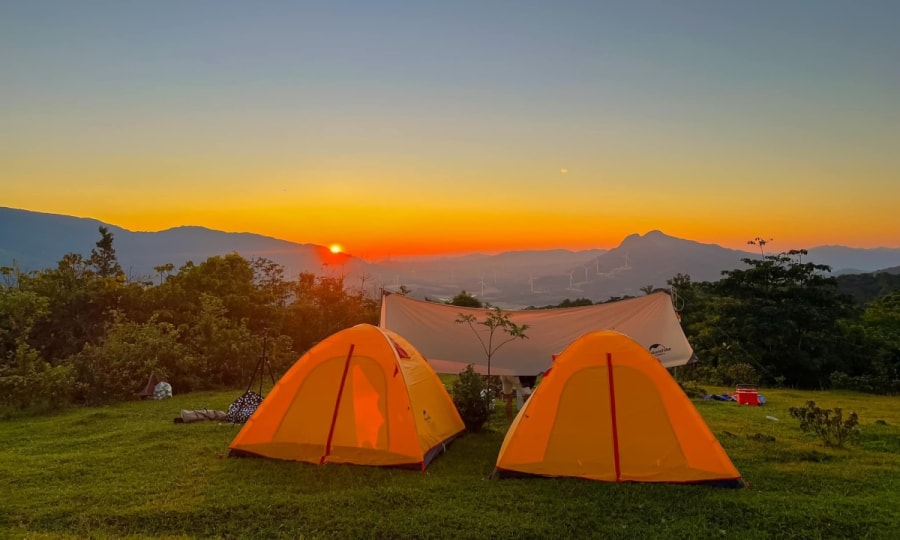
Cu Vo Peak, standing tall at about 1,617 meters above sea level, is renowned for offering the most stunning sunrise vistas in Quang Tri.
During his journeys, Hieu frequently camps here in the afternoon to witness the sunset and wait for cloud hunting on the following morning.
The sunset on Cu Vo Peak is a display of yellow and orange hues illuminating the dark blue sky. As the sun's final rays cast a final glow over the hamlet and village nestled at the mountain's base, they recede behind the distant horizon, signaling the end of the day.
During summer, Cu Vo Peak offers cool and refreshing weather with airy and fresh air. As night falls, the sky becomes a canvas of stars, accompanied by the gentle hum of insects hidden in the bushes and grass. Everything creates an experience that reveals the untamed beauty of this mountainous commune.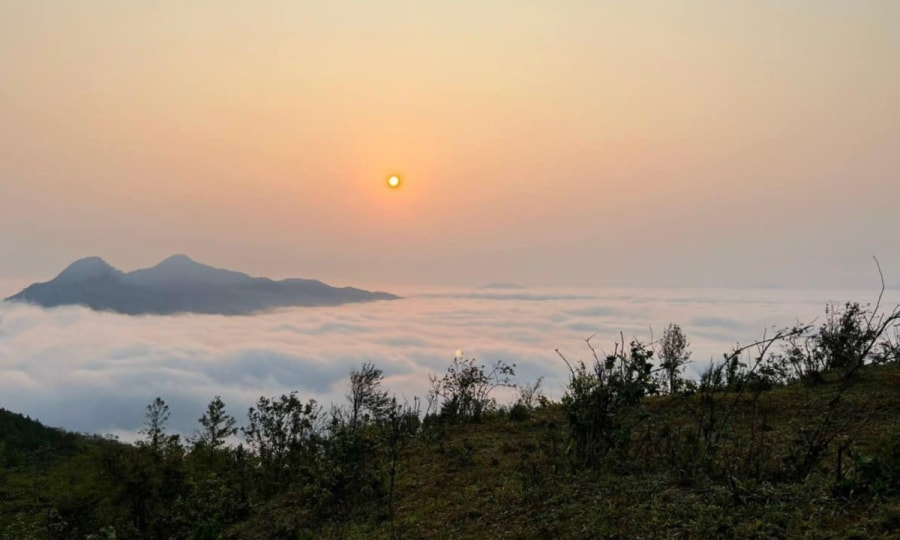
The following morning, visitors are rewarded with a mesmerizing sea of clouds, reminiscent of fluffy cotton stretching endlessly across the landscape. As the first rays of dawn break through, the sea of clouds takes on a golden hue before fully embracing the rising sun.
Hieu said the sea of clouds frequently emerges on high-humidity days, beginning before dawn and lingering for half an hour. To optimize their cloud hunting experience, visitors are advised to check the weather forecast before embarking on their journey.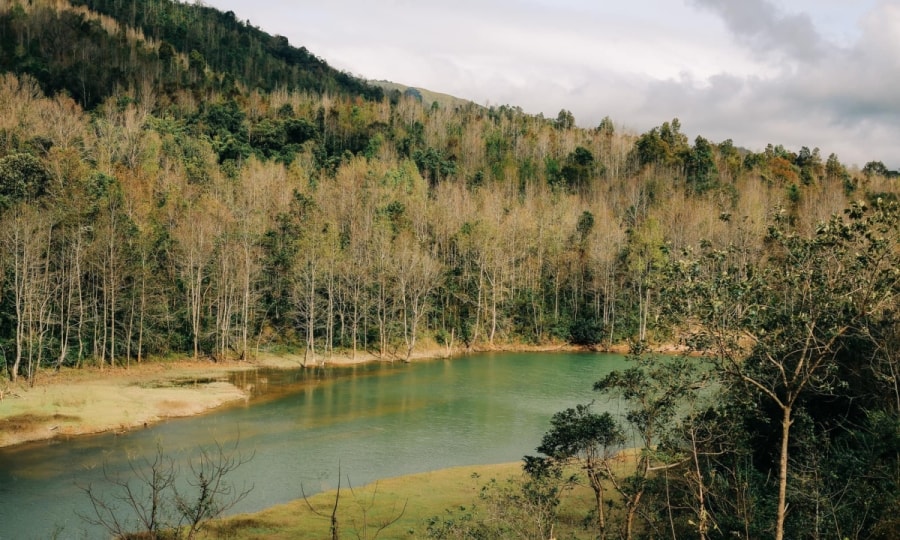
Near the foot of Cu Vo Peak lies Rao Quan hydropower reservoir, which surprised Hieu with its winding water flowing through a dry forest. During the dry season, the reservoir's water levels recede, creating a tranquil oasis adorned with lush greenery from the surrounding trees, mountains, and forests.
The reservoir, upstream the Thach Han river in Huong Hoa district, has a capacity of approximately 163 million cubic meters.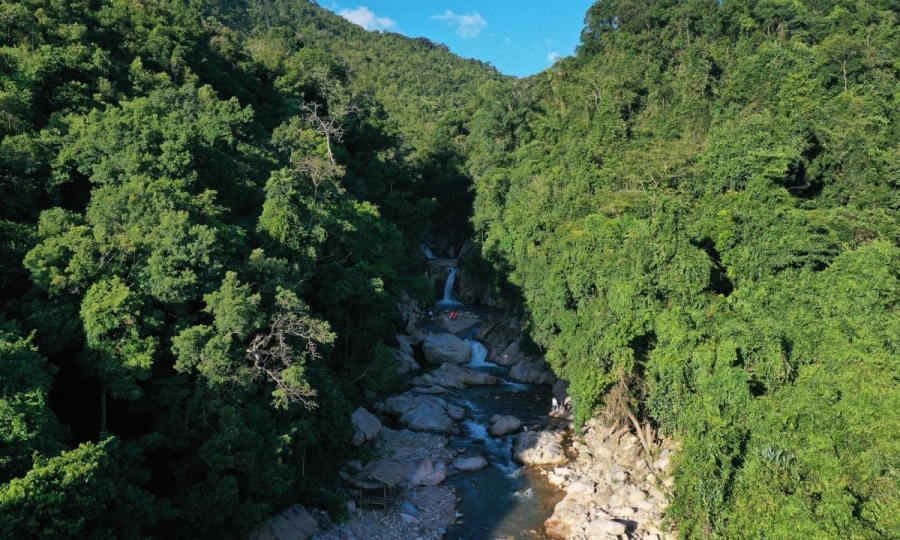
For those interested in community eco-tours, a visit to Chenh Venh village in Huong Phung commune, Huong Hoa district, offers the chance to trek to Chenh Venh waterfall while learning about the lives of the Bru-Van Kieu ethnic minorities.
The Chenh Venh waterfall, within Chenh Venh forest, highlights large rocks along the stream, flanked by gray-brown stone walls adorned with trees. The trail to the waterfall ensures a convenient and immersive experience for visitors.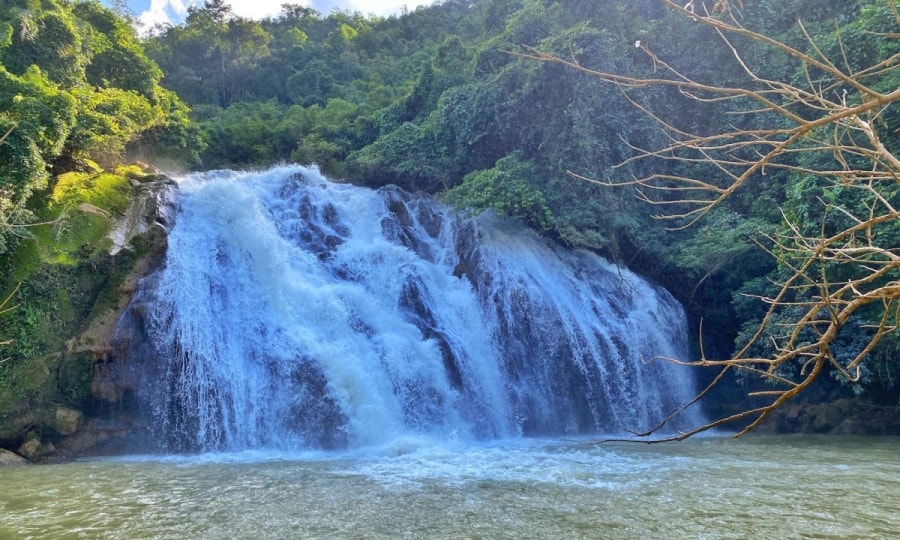
Apart from the Chenh Venh waterfall, visitors can explore Ta Puong waterfall and the Ta Puong cultural village, where traditional stilt houses of the Pa Co and Van Kieu ethnic groups reside.
The Ta Puong waterfall system comprises Ta Puong 1 waterfall, standing at 30 - 35 meters in height, with a continuous flow of water throughout the year. A short 20-minute walk downstream from Ta Puong 1 leads to Ta Puong 2 waterfall. Here, visitors can take a refreshing dip in the vast, cool lake, spanning approximately 5,000 square meters, at the base of the waterfall.
Currently, the area remains untouched by tourism development, preserving its pristine beauty and providing an opportunity for visitors to immerse themselves in nature.
VnExpress